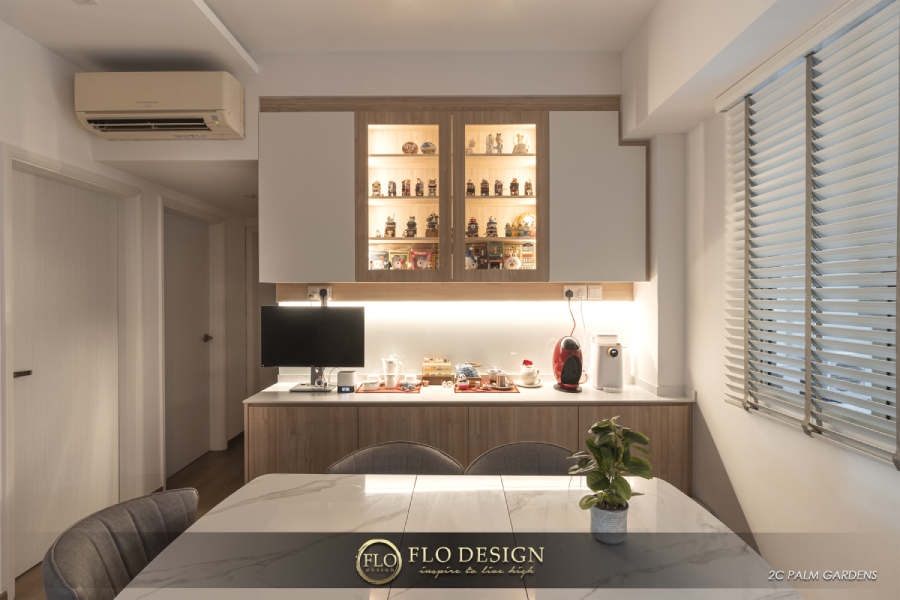
Lighting is a fundamental aspect of interior design that often goes unnoticed, yet it has the power to transform spaces dramatically. It can create ambience, enhance colours, highlight architectural features, and even influence our mood and well-being.
In contrast, poor lighting can detract from even the most meticulously designed interiors. Here's how lighting can make or break your home's interior design and some tips for using it effectively.
1. Setting the Mood
Ambient Lighting
Ambient lighting, also known as general lighting, provides overall illumination for a room. It sets the foundation for the space and creates a comfortable level of brightness without glare. This type of lighting is essential for activities like cleaning, cooking, or general movement around the home. Examples include recessed lights and ceiling-mounted fixtures.
Task Lighting
Task lighting is focused lighting that helps you perform specific tasks such as reading, cooking, or working. It includes desk lamps, under-cabinet kitchen lights, and vanity lights in bathrooms. Proper task lighting reduces eye strain and improves productivity, making it a critical component of functional spaces.
Accent Lighting
Accent lighting adds drama to a room by creating visual interest. It is used to highlight architectural features, artwork, plants, or other focal points within a space. Examples include track lighting, wall-mounted fixtures, and picture lights. Accent lighting helps to create layers of light, adding depth and dimension to your design.
2. Enhancing Colours and Textures
Lighting can significantly affect how colours and textures appear in your home. Natural light brings out the true colours of objects and materials, while artificial light can alter them depending on their temperature and intensity.
Colour Temperature
Light bulbs come in various colour temperatures, measured in Kelvin (K). Warm light (2000K-3000K) creates a cosy and inviting atmosphere, ideal for living rooms and bedrooms. Cool light (4000K-5000K) mimics daylight and is better suited for kitchens, bathrooms, and workspaces where clarity and focus are essential.
3. Highlighting Architectural Features
Lighting can be used strategically to draw attention to architectural features and create focal points within a room.
Uplighting and Downlighting
Uplighting, where light is directed upwards, can highlight ceiling details, textured walls, or large plants, creating a sense of height and space. Downlighting, where light is directed downwards, is useful for highlighting furniture, countertops, and floors, adding warmth and intimacy to a space.
Wall Washing and Grazing
Wall washing evenly illuminates a wall, making a room feel larger and more open. Grazing, on the other hand, involves placing light fixtures close to a textured surface to create shadows and highlight the texture. This technique accentuates stone walls, brick, or wood panelling.
4. Creating Layers of Light
A well-designed lighting scheme includes multiple layers of light: ambient, task, and accent. This approach allows for flexibility and control, enabling you to adjust the lighting to suit different activities and moods.
Dimmers and Controls
Installing dimmer switches and smart lighting controls allows you to adjust the lights’ brightness. This versatility lets you change the ambience of a room from bright and energetic to soft and relaxing with just a touch.
Layering Techniques
Combine different lighting types to create a balanced and dynamic lighting scheme. For example, use recessed lighting for general illumination, pendant lights over a dining table for task lighting, and a few strategically placed accent lights to highlight artwork or architectural details.
5. The Impact on Well-being
Lighting not only affects the aesthetics of a space but also has a significant impact on our mood, productivity, and overall well-being.
Circadian Rhythm
Natural light regulates our circadian rhythm, influencing our sleep-wake cycle. Exposure to natural light during the day and reducing artificial light at night can improve sleep quality and overall health. Incorporate large windows, skylights, and light-coloured walls to maximise natural light.
Mood and Productivity
Different lighting levels and colours can evoke various emotional responses. Bright, cool lighting can boost concentration and energy levels, making it ideal for home offices and kitchens. Warm, dim lighting creates a relaxing and cosy atmosphere, perfect for bedrooms and living rooms.
6. Practical Tips for Effective Lighting Design
Room-by-Room Approach
Each room has unique lighting needs based on its function. Consider the activities that will take place in each space and tailor the lighting accordingly. For example, a kitchen requires bright, focused lighting, while a living room benefits from a mix of ambient and accent lighting.
Layer Your Lighting
Avoid relying on a single light source. Layer different types of lighting to create a versatile and adaptable lighting scheme. Use a combination of ceiling lights, wall lights, floor lamps, and table lamps to achieve the desired effect.
Consider Scale and Proportion
Choose light fixtures that are appropriately scaled for the room and its furnishings. Oversized fixtures can overwhelm a small space, while too-small fixtures can look out of place in a large room.
Conclusion
Lighting is a powerful tool in interior design that can enhance the beauty, functionality, and atmosphere of your home. By understanding the different types of lighting and how to use them effectively, you can create a well-lit space that meets your needs and reflects your personal style. Remember to layer your lighting, choose the right colour temperature, and highlight key features to make the most of your home's interior design. With thoughtful planning and execution, lighting can truly make your home shine.
Interested in engaging interior design services in Singapore? Work with Flo Design’s interior designer for condos, HDB flats, and landed properties and transform your house into a beautiful home. Contact us for more information.




